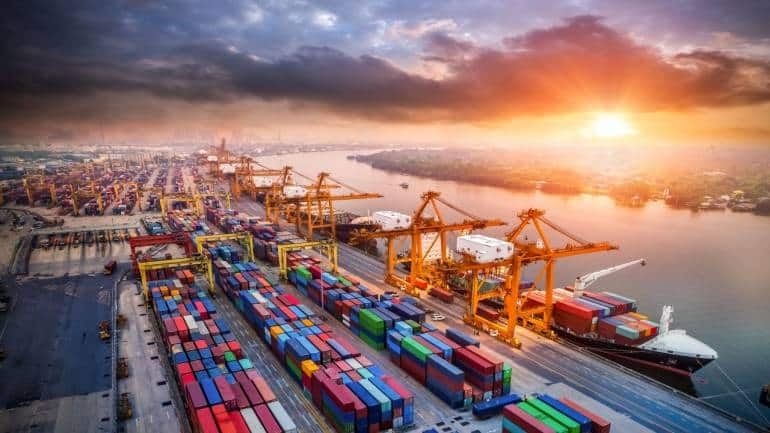- Arvind's Newsletter
- Posts
- Arvind’s Newsletter
Arvind’s Newsletter
Issue No #1012
1.India’s Current account gap narrows to 1% of GDP at $8.3 bn in Q2FY24: RBI
India’s current account deficit (CAD) narrowed sequentially to $8.3 billion, or 1 per cent of gross domestic product (GDP), in the quarter ended September (Q2FY24) due to lower merchandise trade deficit and growth in services exports.
The CAD was $9.2 billion, or 1.1 per cent of GDP, in Q1 and $30.9 billion, or 3.8 per cent of GDP, in Q2FY23. The CAD for the April-September quarter of FY23 was 2.9 per cent of GDP in H1FY23.
The merchandise trade deficit narrowed to $61 billion from $78.3 billion in Q2FY23, according to Reserve Bank of India (RBI) data released on Tuesday.
2.Why Indian highways have a strangely high fatality rate, analyses a report in Economic Times
India suffers 53 road accidents and 19 deaths every hour. Is it due to poor road infrastructure? On the contrary, India is building roads and highways like never before. Still highways account for 56.1% of the accidents and 60.6% of the fatalities. Who should we blame? Some excepts from article:
In 2022 alone, road accidents claimed 168,491 lives in India and injured 443,366 people, shows Ministry of Road Transport and Highways (MORTH) data. The number of road accidents last year increased by 11.9% compared to 2021. Similarly, the number of deaths and injuries on account of road accidents increased by 9.4% and 15.3%, respectively. On average, these figures translate into 1,264 accidents and 462 deaths every day or 53 accidents and 19 deaths every hour in the country.
Among significant million-plus cities, Delhi witnesses the highest fatal crashes followed by Chennai, Beijing, and Shanghai. Other cities with similar demographic and geographical characteristics experience many road crashes, but their fatality rates are comparatively lower than that of Delhi, according to a recently released study by the Delhi Police titled ‘Delhi Road Crash Report 2022’.
National highways, including expressways, account for 32.9% of the total accidents, state highways 23.1%, and other roads 43.9%, shows the MORTH data mentioned earlier. Till last year, highways (both national and state) accounted for only 5% of total road network but witnessed a disproportionately large share of accidents (56.1%) and accident-related fatalities (60.6%).
Good roads do come with their own predicament, as people tend to overspeed. According to roads ministry data, speeding is a major killer, accounting for 71.2% of the persons killed last year followed by driving on the wrong side (5.4%). In 2022, the number of accidents, fatalities, and injuries due to over-speeding increased by 12.8%, 11.8% and 15.2%, respectively, compared to 2021.
Drunken driving, jumping of red lights and use of mobile phones together accounted for 7.4% of total accidents and 8.3% of total deaths. Other reasons like road environment, vehicular condition etc. accounted for 18.2% of the accidents, 18.1% of fatalities and 18.1% of injuries, according to the report.
3.Year in a word: Magnificent Seven, reports Katie Martin in Financial Times.
Magnificent Seven: (noun) grouping of large tech stocks that has dominated US and global markets
For a short time at the start of 2023, stock markets behaved as recession-obsessed investors expected: badly.
But a drab start quickly gave way to a rally dominated by a clutch of big tech names stitched loosely together through the hot theme of artificial intelligence: Apple, Microsoft, Alphabet, Amazon, Tesla, Meta and Nvidia.
By June, their Magnificent Seven nickname was really starting to stick.
Some element of top-heaviness is a reasonably common feature in US equities, but the Magnificent Seven (or Mag7 for short) have taken that to new extremes.
At around the midpoint of 2023, these stocks had jumped in price by between 40 per cent and 180 per cent, pulling the benchmark S&P 500 index of US stocks up by some 14 per cent, making it one of the strongest starts to a year in two decades. Without the Mag7, however, the index was flat.
Since then, stock market strength has broadened out. Still, Charles Schwab calculates the Mag7 have gained more than 100 per cent this year and account for a massive 30 per cent or so of the index. Without them, the S&P 500 is up 11 per cent; with them, the performance is doubled. Their size is now so pronounced that they do not dominate just US stocks, but a large slice of the performance of global equity markets too.
Investors say this is no rerun of the ill-fated 1999 dotcom boom. Rather, inflows are coming from conservative investors seeking companies that can weather a downturn, stockpickers convinced of the AI revolution, short-termists chasing high-flying stocks and index trackers following a broad index.
The danger, though, is that just one scandal or swipe of a regulator’s pen could hit one stock and inflict pain on investors worldwide.
4.Asia and Africa adopt electric bikes: Electric cars are driving the green transition in the West, but in Africa and Asia, electric motorcycles are winning.
“Most of the world’s population uses bikes, scooters and small vehicles.” reported OilPrice.com, and are looking to electric alternatives. In India, 90% of electric vehicles sold are motorcycles or three-wheeled tuk-tuks. The smaller vehicles are cheaper and better suited to congested roads, and between them make up four-fifths of Indian traffic.
In Kenya, President William Ruto plans to boost electric motorcycle sales to 200,000 a year by the end of the decade: Thousands of boda boda motorcycle taxis already use a battery-swapping system that allows them to pick up a fully charged battery from service stations.
5.A Danish architecture studio unveiled its plans for a new development in Bhutan called Mindfulness City.
The design envisions a series of “inhabitable bridges” — containing features such as a market, healthcare center, and a university — that connect neighborhoods set around the 35 rivers and streams that run through the site. It also proposes an international airport and a hydroelectric dam that will incorporate a temple. “We imagine the Mindfulness City as a place that could be no place else," the studio’s founder told Dezeen. “Where nature is enhanced, agriculture is integrated, and tradition is living and breathing.”
6.China’s Yuan Is Quietly Gaining Ground, reports the Wall Street Journal
Chinese assets have had a terrible year—but China’s currency is gaining ground as an international payments option.
The yuan’s status as a global currency still faces a huge obstacle in the form of China’s own capital controls. Even so, rising willingness to conduct trade in yuan could help insulate China’s economy, at least to an extent, in the event sanctions were imposed in a hypothetical future conflict with the West. It also could become a source of structural support for the yuan itself, even assuming weaker-than-expected Chinese growth in the years to come.
The headline numbers are eye-opening. China’s cross-border yuan settlement for merchandise trade has more than doubled, on a monthly basis, since mid-2020—and is now equal in value to over a quarter of China’s top-line goods trade, official figures from the central bank and Commerce Ministry show. That is up from roughly 13% in 2019, and takes the ratio back to where it sat in late 2015—before China’s surprise yuan devaluation and tighter capital controls knocked back the previous big push for yuan internationalization.
In October, 3.6% of international payments globally were made in yuan, according to data from Swift, the international financial-messaging service. That was up from less than 2% in January, and marginally below September’s 3.7%, which was a record high. And the real number may be higher, since some yuan transactions—particularly any involving U.S. sanctioned entities—wouldn’t be conducted using Swift.
Much of this is the Russia effect. Following the outbreak of the Ukraine war and Western sanctions, Russia has replaced Saudi Arabia as China’s top oil supplier and become a key market for Chinese autos. And China and Russia now conduct the lion’s share of their bilateral trade in yuan: Close to two thirds of Russia’s imports from China were already invoiced in yuan by the end of 2022, according to the European Bank for Reconstruction and Development. Many of China’s other international trade partners—particularly those in the developing world less likely to take the West’s side in any hypothetical conflict—will have taken note.
There are important caveats. Sanctions would still be hugely disruptive to financial flows outside of trade, and could hit China’s ability to deploy its dollar reserves. At 3.6% of global payments, the yuan remains a minnow compared with the dollar, at 47%, and the euro, at 23%. Capital controls limit the attractiveness of the yuan as an investment tool, which will continue to impede its role as a reserve asset—particularly in the developed world. And developed democracies remain critical markets for China: presumably in a crisis, many of them would sign on to U.S. sanctions and refuse to accept yuan. Read on.




